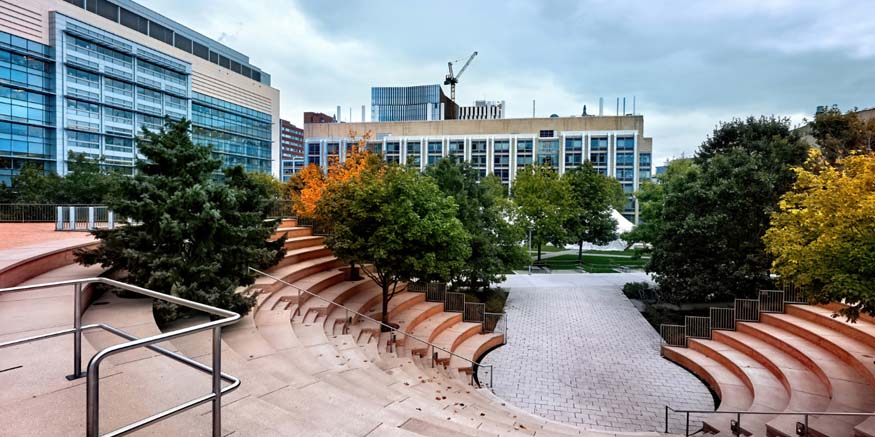The records of Bangalore span numerous millennia and consist of contributions from various ancient and medieval dynasties in South India. Throughout those intervals, Bangalore step by step developed right into a full-size urban centre, each dynasty leaving its personal cultural and architectural effect on the area.
Early and Medieval History
- Bangalore’s records date to circa 4,000 BCE, with early human settlements and burial grounds at Chikkajala and Koramangala.
- It was ruled by the Western Ganga Dynasty (350–1004 CE), followed by Chola dominance in 1004 CE, fostering migration from Tamil Nadu and Kannada-speaking areas.
- The Hoysala Dynasty (1117–1343 CE) ruled after defeating the Cholas, contributing to cultural and architectural improvements.
- Subsequently, Bangalore fell under the Vijayanagara Empire (14th–17th centuries CE), marked by infrastructure initiatives like the Shivanasamudra Dam.
- These periods fashioned Bangalore’s cultural history over millennia.
Foundation and Early Modern History
- Bangalore in 1537 was founded by Kempé Gowda under the Vijayanagara Empire, establishing a mud-brick citadel and dividing the town into petes (localities). It thrived as “Devarāyanagara ” or “Kalyānapura ” underneath Vijayanagar rule, increasing under Kempé Gowda II.
- After Vijayanagara’s decline in 1565, Bangalore briefly declared independence before falling to Adil Shahi Bijapur in 1638, then to the Mughals in 1687 and finally to the Wodeyar Kings of Mysore.
- In the 18th century, Hyder Ali and Tipu Sultan improved Bangalore’s infrastructure.
- The British captured the Bangalore fortress in 1791, later integrating it into the Princely State of Mysore, leading to significant colonial technology like telegraph and rail connections.
This timeline outlines Bangalore’s transformation from a fortified city below nearby rulers to a strategically critical metropolis for the duration of colonial technology.
Also Read: Outdoor Activities in Bangalore
Later Modern History
- Bangalore advanced from a colonial twin city to a global IT hub. In the nineteenth century, it evolved with native “pētē” areas and a British cantonment, undergoing sanitation reforms after a devastating plague in 1898.
- Early 20th-century milestones included Victoria Hospital (1900) and the establishment of electricity (1906). The Indian Institute of Science (1909) boosted its medical standing.
- It earned the name “Garden City of India” in 1927 and played a role in India’s independence movement.
- Bangalore’s rapid growth brought about the formation of the Bangalore City Corporation in 1949.
- It emerged as the “Silicon Valley of India” in the twentieth century, faced situations like terrorism in the twenty-first century and remained a hub for technology and cultural diversity.
Geography
- Bangalore, located in southeastern Karnataka on the Mysore Plateau, averages 900 metres in elevation.
- Its topography is largely flat with a central ridge and Vidyaranyapura Doddabettahalli, the highest point, reaches 962 metres.
- Water traditionally sourced from lakes like Kempambudhi Kere, built by Kempe Gowda I, now comes mainly from the river Kaveri (80 %) and reservoirs like Thippagondanahalli and Hesaraghatta (20%).
- The city faces various air pollutants, with AQI readings ranging from mild to severe in busy areas.
- Bangalore’s geology is dominated by the Peninsular Gneissic Complex (PGC) and its soils range from red laterite to loamy and clayey compositions.
- Vegetation consists of deciduous trees and coconut palms, with the metropolis falling under stable seismic zone II, experiencing earthquakes up to 4.5 magnitude.
Also Read: Indoor Activities in Bangalore
Climate
Bengaluru has a tropical savanna climate with wet and dry seasons. Due to its high elevation, Bangalore usually has a mild climate all year. The coolest month is December, with a mean low temperature of 15.4 °C and the hottest month is April, with an average temperature of 36 °C.
Demographics
- Bangalore, India’s third most populous city had 8.5 million residents in 2011 and faces normal urbanisation challenges common in developing towns: social inequality, slum growth, and public health crises due to water shortages and sewage troubles in poorer regions.
- Linguistically diverse, the town accommodates Kannada, Urdu, English, Telugu, Tamil, Malayalam and Hindi languages.
- Environmental concerns include the daily generation of 3,000 tonnes of solid waste, with inadequate management and pollution control affecting neighbourhoods like Whitefield.
- The Karnataka State Pollution Control Board oversees waste management, addressing municipal, bio-medical and toxic waste to mitigate environmental pollution.
Also Read: Best Weekend Trips in Bangalore
Economy
- Bangalore hosts important aerospace entities like HAL and NAL, pivotal to India’s aerospace R&D.
- It’s famed as India’s Silicon Valley, home to IT giants like Infosys and Wipro and widespread IT exports.
- The city’s economy, worth ₹523 billion in 2006–07, flourishes in diverse industries, including biotech. Headquarters of PSUs like BEL and BEML, and study centres for worldwide companies, together with Airbus and Boeing, underscore its business importance amidst infrastructure challenges and concrete development issues.
Culture
- Bangalore, known as the “Garden City of India,” charms with its high-quality climate, expansive parks like Lal Bagh and Cubbon Park and spacious streets.
- It’s hailed as the “Pub Capital” and “Rock/Metal Capital of India,” hosting vibrant music scenes and international rock concerts.
- Ranked 3rd by Lonely Planet in 2012, Bangalore entices visitors with cultural galas and a dynamic lifestyle.
- Biannual flower shows at Lal Bagh, the Bangalore Karaga festival and Karnataka Rajyotsava are highlights of this place.
- Culinary delights range from street vendors and Udupi eating places presenting vegetarian fare to numerous alternatives reflecting Bangalore’s multicultural fabric and include South Indian, North Indian, Chinese, and Western cuisine.
Also Read: Educational Trip Ideas For Kids
Theatre, Music and Dance
- Bengaluru is the hub of the Kannada movie industry, producing approximately eighty Kannada films annually.
- The town boasts a colourful theatre scene, with popular venues like Ravindra Kalakshetra and Ranga Shankara hosting Kannada, English and foreign language performances.
- Kannada theatre in Bangalore is famous for political satire and mild comedy. It additionally hosts visiting drama companies from India and abroad.
- Bengaluru is a prime centre for Indian classical song and dance, contributing to its wealthy cultural tapestry.
Education
- Until the early nineteenth century, schooling in Bangalore was religion-based. Western training started under Mummadi Krishnaraja Wodeyar. St. Joseph’s Indian Institutions (1842), Bangalore High School (1858), and Bishop Cotton Boys’ School (1865) were early institutions.
- Nursery, Kindergarten, primary and secondary education are offered with the aid of numerous forums (SSLC, ICSE, CBSE, IB, IGCSE, NIOS) in government and private schools. International schools are common because of expatriates and the IT sector.
- After secondary schooling, students pursue PUC, Arts, Commerce, Science, or Diploma courses. Bangalore University (est. 1886) affiliates 500+ colleges with 300,000+ students. Engineering education is offered by UVCE (1917) and private colleges like RVCE, PESIT, BMSCE, MSRIT, and BIT under VTU.
Media
- Wesleyan Christian Mission established Bangalore’s first printing press in 1840 for Kannada. Bangalore Herald (1859) was the town’s first English bi-weekly and Mysore Vrittanta Bodhini (1860) its first Kannada newspaper.
- All India Radio started broadcasting from Bangalore on 2 November 1955. Doordarshan launched TV relay services on 1 November 1981, with a manufacturing centre set up in 1983.
- STPI Bangalore initiated Internet services in the early 1990s.
- Namma Wifi, Bangalore’s first municipal wireless community, began on 24 January 2014, covering locations like M.G. Road and Brigade Road, operated by D-VoiS and funded by the State Government.
Sports
Bengaluru boasts nice weather that favours outdoor sports activities for kids, with cricket being surprisingly popular.
Bangalore was officially renamed Bengaluru in 2006 to mirror its Kannada pronunciation. Positioned atop a ridge at approximately 900 metres above sea level, the metropolis is a hub of training and high-technology industries. Bengaluru functions as a mix of historic districts and contemporary suburbs, with landmarks like Vidhana Soudha and Attara Kacheri. It hosts Bangalore University and different instructional establishments. The metropolis prospers in IT, electronics, biotech, and manufacturing industries. For more information on this topic, touch base with the EuroSchool blogs.
EuroSchool campuses in Bangalore
We offer quality education across all our schools in Bangalore. Here is a list of EuroSchools in Bangalore:









